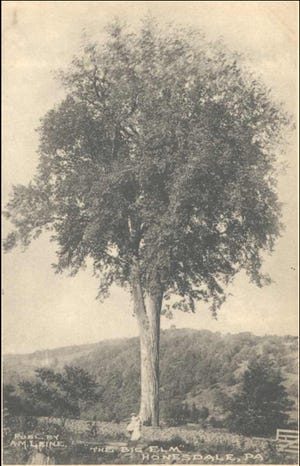Another plague amongst us

Black, blue, red, white – what sounds like a color chart, in this case the nomenclature of ash tree species. At first I was bewildered by this list because it did not list the green ash for which Central Wisconsin is habitat, only to discover what we call green ash is really red ash in other places and that more broadly accepted as the species.
The ash tree is the genus Fraxinus, curiously the Latin word means ash tree, as cited by Pliny the Elder, equally meaning a spear or javelin, presumptively made of ash.
Wood craft has long exalted the ash, most of Europe knew and utilized this tree, obviously culturally intertwined when the same word for the tree is a spear. The ash was found in all Europe, British Isles to Norway, western Russia, the Caucasus. What follows is a list of dependents: bows, shovel handles, spears, car bodies, wheels, baskets, gallows, furniture, cue sticks, oars, lobster pots. Hurling, that strange game of the Irish and Scots is also known as the Clash of Ash, what the stick is made of.
In Scotland lovers were said to eat the leaves of the ash, the effect called the dreamin’ to the purpose of answering whether the love is true. European ash cultivars numbering twelve include the weeping ash, the purple, the blaze, the golden.
In North America the ash predominates wetlands and swamps from Nova Scotia to North Dakota to Texas. The Black Ash is known as the hoop tree, it splits easily. Indians made baskets by pounding ash butts that separated into thin splits, for the reason the spring wood ring where large pores separates the layer from summer wood, and why ash splits easily.
Ash grows well in wet places, aggressive is how some botanists describe it. The ash tree generations actually known to reclaim wetland, as generations of trees displacing the wetness to be succeeded by more dry ground species like elm and red maple. Burls of Black Ash are famously convoluted, its veneers among the most luxurious for high end furniture making.
Blue ash prefers a drier soil and grows well over limestone. Good for handles, particularly the bent handles like a scythe, the curve of pioneer hay forks, the arch of the hewing axe.
The red ash, also known as green ash, also river ash, bastard ash, brown, black, is a notably mixed personality. Its east coast range runs from Nova Scotia through the Appalachians, west to Texas, Montana, Rocky Mountains, Arizona, a hardy tree often associated with Boxelder/cottonwood. This ash is the likely resident of front yards and city streets, a reliable and fast growing tree. Canoe paddles are made of green ash, its fuel value 90% of white oak. Central Wisconsin is mostly Green ash, white ash the scarcer.
White ash, famous for the baseball bat, and the equally famous sound when the ball well connects. Also hockey sticks with equally famous sounds of white ash slapping the puck.

The USDA of January 2021 will no longer regulate the interstate movement of ash lumber or firewood and the decade-long quarantine that attempted to slow the spread of the emerald ash borer, the big-eyed, green-bodied, orange-legged infection of the American forest.
Halting the ash plague has been difficult, some $350 million has been spent in 20 years, monies that could be used elsewhere on other forest threats, such as California fires. The effectiveness of such quarantines has been patchy, as alternatives are few. One the USDA still hopes will fill the bill is the release of wasp species to parasitize the emerald ash borer, now in experimental practice at 340 locations in 30 states. Some sites have established wasp populations killing 20-85% of the borer larvae on ash saplings, unfortunately not so on mature trees.
The tragedy is the inevitable loss of this very American tree. If eventually the borer may be controlled or a borer-resistant species developed, we are still to lose our ash forests that have companioned the continent since the Pleistocene. This grand old monarch of the river edge, the wet woods, of Babe Ruth’s baseball bat, will likely be gone in another generation.
We probably don’t think of the Emerald ash borer in the same light as COVID19, if maybe we should. World commerce, our air travel, all those container ships lack consistent and effective means to contain insect vectors, overwhelmed by the sheer volume of world commerce in food stuffs, raw materials, consumer items, all of them on an expressway equipped for disease transmission, molds, insects and as we well know, viral disease.
How to reduce this risk that threatens the world’s biome is an open question for our capital intensive commerce. Perhaps vector-proof packaging is the answer, perhaps chemical fumigation, perhaps quarantine.
Failure to find the means of controlling these vectors is to continue the threat of the gypsy moth, spruce beetle, white pine blister, southern pine beetle, sudden oak death, along with 16 other known vectors, all of non-native origin.
All these are the result of ever more intense world commerce. The hard question is what barriers, what walls can be effective, yet commercially functional? If only President Trump had addressed this need for a wall!

Justin Isherwood of Plover is a fifth-generation farmer and the author of Book of Plough,Christmas Stones & The Story Chair, and Farm Kid: Tales of Growing Up in Rural America.